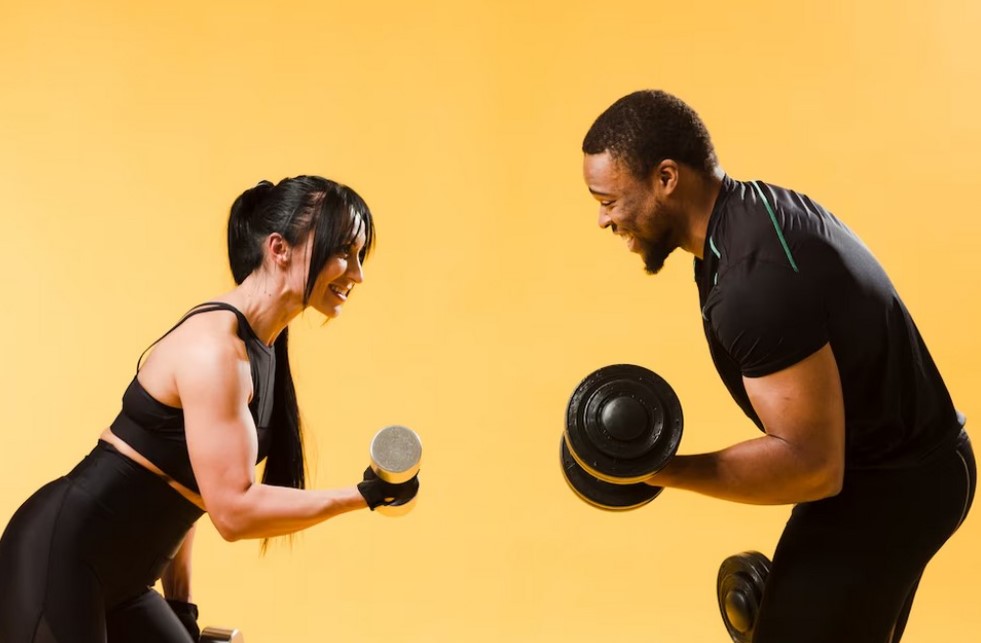Bodybuilding and powerlifting are two popular strength sports that on the surface may seem quite similar. Both involve lifting weights to build muscle and strength. However, they have very different goals, training methods, competitions, and criteria for success. Understanding the key differences between bodybuilding and powerlifting provides insight into choosing between these two demanding sports.
Training Focus and Goals
The primary difference between bodybuilding and powerlifting is the ultimate training goal. Bodybuilders aim to develop the most aesthetically pleasing physique with emphasis on making each muscle group well-defined and proportional. Powerlifters, on the other hand, train to maximize their strength in order to lift the heaviest weights possible during competition.
Bodybuilders perform higher repetitions with lighter weight while powerlifters lift heavier weight for fewer repetitions. This allows bodybuilders to fatigue and fully exhaust each muscle group to promote maximum muscle growth. Powerlifters lift near maximal weights to strengthen the nervous system and increase muscle power.
Competition Criteria
Due to the contrasting goals, bodybuilding and powerlifting competitions judge participants according to entirely different criteria. Bodybuilding competitions, including high-profile events like Mr. Olympia, rate competitors on muscular size, proportions, symmetry, and overall stage presence. “Pumping up” with light weights backstage helps bodybuilders maximize their vascularity and muscle definition.
Powerlifting meets, like the IPF World Championships, evaluate competitors on the total amount of weight lifted across three compound movements: squat, bench press, and deadlift. Powerlifters do not emphasize physique or aesthetics. The sole focus is on strength.
| Bodybuilding | Powerlifting |
|---|---|
| Muscular size and definition | Maximum weight lifted |
| Proportions and symmetry | Squat, bench press, deadlift |
| Stage presence and posing | No physique judging |
Diet and Physical Size
The dietary strategies of bodybuilders and powerlifters also differ significantly. Bodybuilders follow strict diets designed to reduce body fat while maintaining lean muscle. Common bodybuilding diet techniques include carb cycling, high protein intake, and eating many small meals throughout the day. Top bodybuilders typically have just 3-5% body fat.
Powerlifters also aim for low body fat but not to the bodybuilding extreme. Some natural fat and body weight offers advantages for powerlifters, as it allows them to compete in heavier weight classes and helps support intense training. Powerlifter diets focus more on macronutrient ratios and timing around workouts.
The physiques of elite competitors showcase the different results of bodybuilding versus powerlifter training and diet. While some powerlifters are exceptionally muscular, bodybuilders typically sport larger, more defined muscles accentuated by small waists and very low fat levels.
Training Splits and Volume
Bodybuilders tailor their training splits and volume to prioritize full development of each muscle group. A common bodybuilding split trains different muscle groups on different days throughout the week, allowing at least 48 hours of rest before training the same muscles again.
Workouts consist of many exercises – often 8-12 per muscle group – generally performing 3-4 sets of 8-12 repetitions. Bodybuilders use techniques like drop sets, supersets, tri-sets, partial reps, and others to maximize muscular fatigue and hypertrophy.
Powerlifters structure programming around the three competition lifts – squat, bench press, and deadlift – which they perform multiple times per week. Sets stay in the 1-5 rep range at near maximal intensity. Additional exercises target weaknesses in the main lifts. Powerlifters periodize volume and intensity over weeks or months leading up to a meet.
Athletic Backgrounds
Participants often enter bodybuilding or powerlifting from different athletic backgrounds. Bodybuilders more often have a background in gymnastics, yoga, calisthenics, or recreational weightlifting focused on physique development. The strict exercise and diet control required for bodybuilding competitions appeals to those seeking an ultra lean and muscular physique.
Powerlifters tend to have a foundation in sports that develop whole body power like wrestling, football, or weightlifting. The ability to recover from heavy training and genetic gifts like fast-twitch muscle fibers contribute to powerlifting success. The thrill of moving maximal weight attracts powerlifters to the sport.
To conclude, while both demanding iron sports, bodybuilding and powerlifting have distinct histories, goals, training methods, competitions, and physiques. Bodybuilders sculpt the ideal aesthetic figure while powerlifters pursue mind-boggling feats of strength. The choice between these sports comes down to your motivation for lifting weights and the type of physical abilities you aim to develop. Whether you desire to have rippling six pack abs or deadlift 700 pounds, consistent hard work and excellent nutrition is required in the gym.
